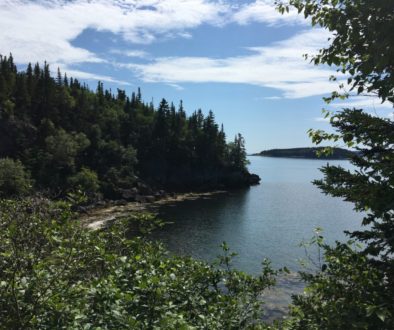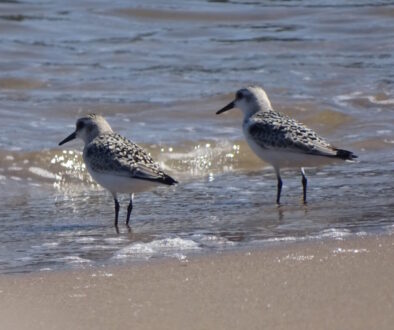News Release: Progress on New Brunswick’s parks slow in 2009
New report marks Canada’s Parks Day, July 18th
Fredericton – In The Good, the Bad and the Ugly, its second annual review of the state of Canada’s parks, the Canadian Parks and Wilderness Society (CPAWS) reports that the pace of new parks creation slowed significantly in the past 12 months compared to 2008, which it had hailed as a “banner year”. In New Brunswick, establishment of new small protected areas was overshadowed by concerns about lack of ecosystem protection in provincial parks.
GOOD NEWS – More protected areas established, government commits to adding more
The bright spots for New Brunswick include the establishment of 5000 hectares of new protected natural areas in 30 small sites. Also a step forward is the government’s acquisition of natural areas next to Grand Lake Protected Natural Area and The Anchorage Provincial Park, which should help conserve the ecological integrity of these protected lands.
Roberta Clowater, Executive Director of CPAWS New Brunswick, says, “Perhaps the most hopeful sign is the government’s announcement this year of a future expansion of the protected natural areas system by between 50 and 100 percent. CPAWS is encouraging the government to at least double the small protected areas system, which now stands at 4 percent of Crown land. Conservation scientists have indicated that even at that rate, New Brunswick will not have protected sufficient amounts of important wild areas and habitats to secure wildlife, forests and rivers for the future.”
BAD NEWS – Provincial Parks not managed to protect habitats and ecosystems
The bad news is that the New Brunswick Parks Act does not include any mandate to protect the ecological integrity of provincial park ecosystems, develop conservation management plans, or consult the public about potential uses of park lands.
Ms. Clowater adds, “Provincial parks are managed in such a piecemeal way that the public doesn’t know from year to year what the intentions are for future management of any park. The fate of wildlife and habitats in provincial parks is not necessarily secure, since internal decisions by government could result in developments that are incompatible with nature conservation. We have a recent example in the tree cutting that happened at Mactaquac Provincial Park last summer, even though there was no available evaluation of impacts the new development might have on wildlife and ecosystems.”
“Recent budget cuts that threaten environmental education programs and operations at Mactaquac and have eliminated all Protected Natural Areas local advisory committees are worrying signs that the provincial government may not be as committed to parks and community engagement as they should be,” says Clowater.
THE UGLY – Risk of degradation of Fundy National Park because of activities surrounding park
On the “ugly” side, CPAWS is reporting a lack of progress in addressing problems in Fundy National Park where industrial or development activities within or close to its boundaries are threatening to harm the sensitive ecosystems the park was intended to protect.
“Fundy National Park, despite its fame across Canada, is too small to really protect enough habitats for wildlife in both land and water. The endangered Bay of Fundy Atlantic salmon, black bears and marten would all benefit from more protected habitats around Fundy National Park. Scientists and people who care about Fundy have been calling for the park to be expanded for decades, and renewed efforts to expand the Park seem to be stalled,” notes Ms. Clowater.
In every province and territory, CPAWS is working with other organizations, First Nations and governments to create more protected areas that will conserve our extraordinary wilderness heritage.
For interviews, contact:
Roberta Clowater, Executive Director, CPAWS New Brunswick; 506-452-9902; cpawsnb@nb.sympatico.ca
View full report, related map and video at www.cpaws.org/parks


